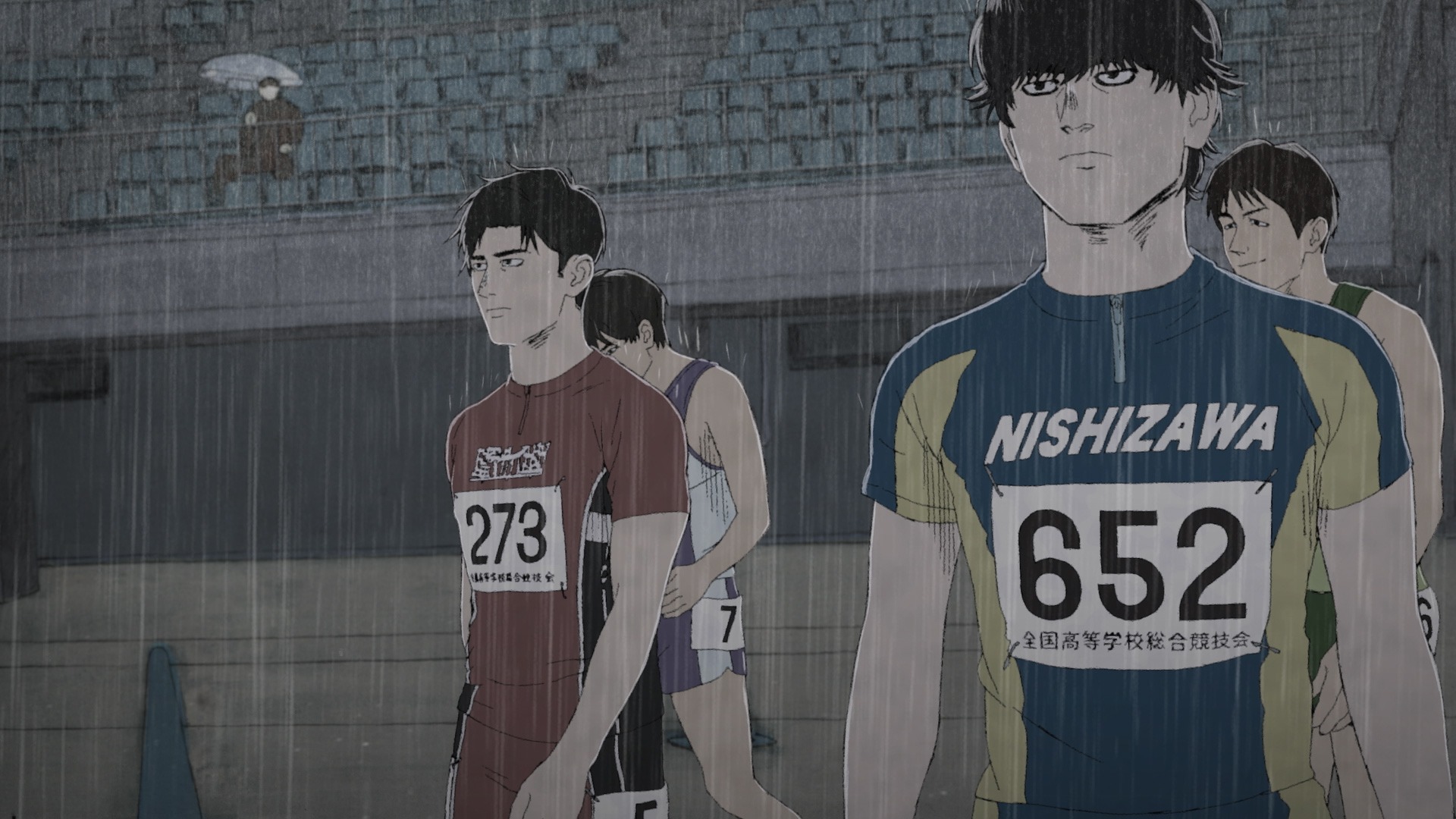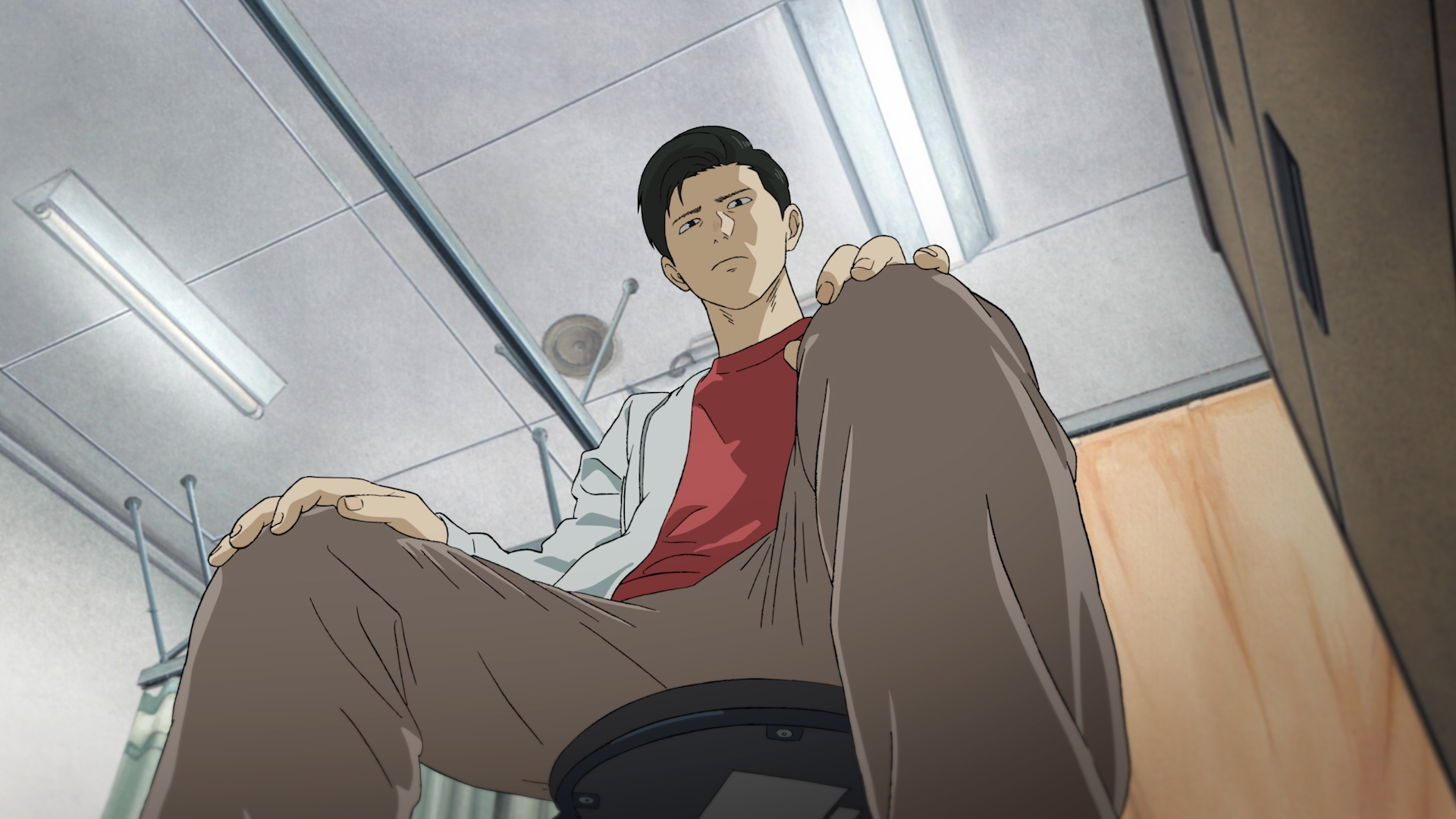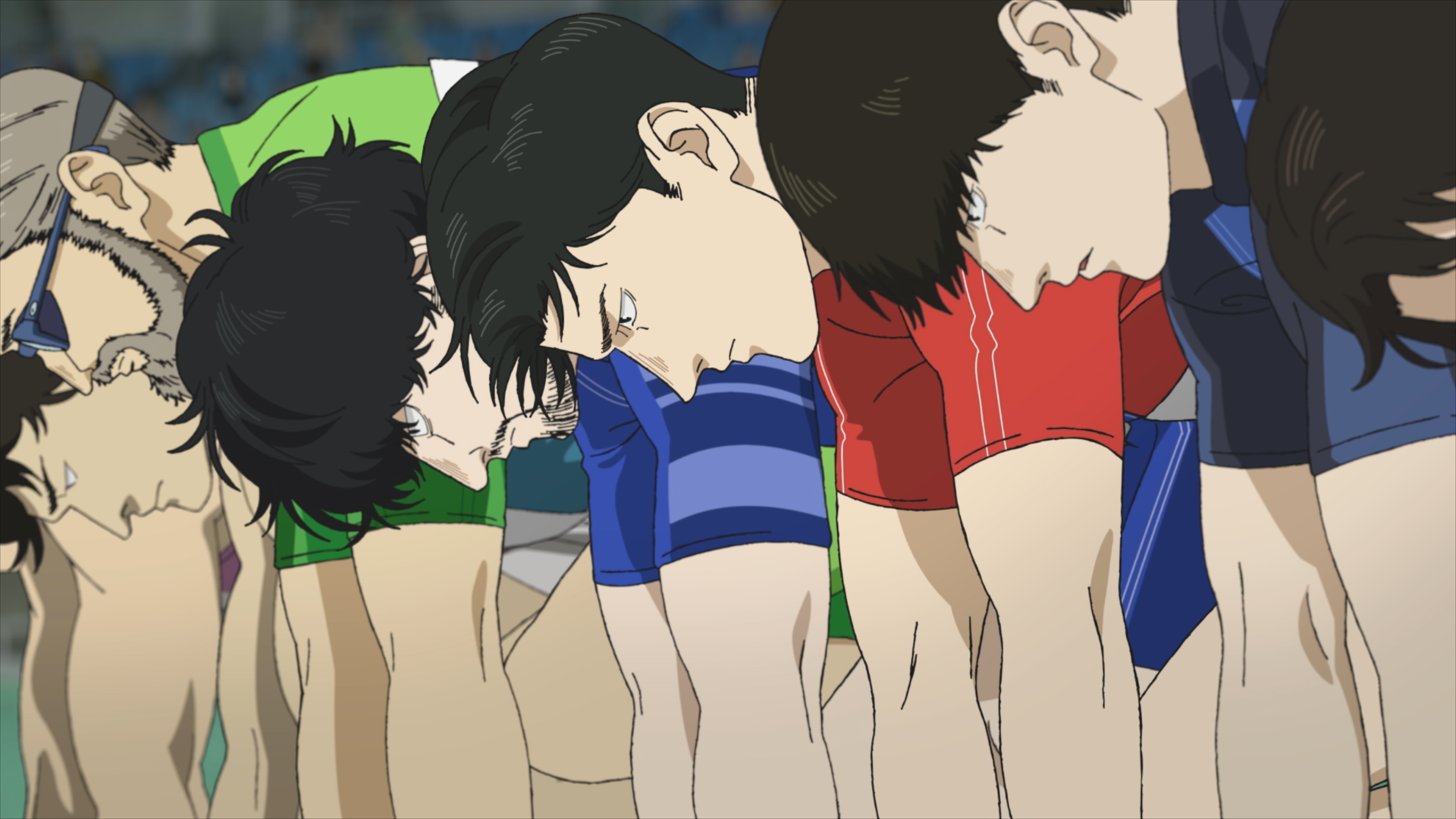In a short period since partnering with Toho, GKids has established itself as the anime equivalent of the Criterion Collection. Through its theatrical rereleases of deep-cut cult-classic films from yesteryear, anime TV compilation preview films, and getting in on the ground floor of new hot shows, GKids established a name for itself bringing fans from the hovels of their streaming home setups to that magical place where heartbreak feels good to Nicole Kidman: the theatre. Its forthcoming release, 100 Meters by Studio Rock’N Roll Mountain, taps into the big game pageantry by propelling one of the most low-key goated, yet slept-on, sports—track and field—into the limelight through the awesome artistic power of rotoscoped animation.
Created by Uoto, a mangaka best known for Orb: On The Movements Of The Earth, 100 Meters follows two runners: Togashi, a gifted sprinter lauded by all for his natural-born talents, and Komiya, an unconventional runner working hard to make a name for himself on grit alone. Similar to Tatsuki Fujimoto’s Look Back, 100 Meters follows the friendship-turned-rivalry of two friends from childhood through adolescence to adulthood as they struggle to meet their athletic goals without burning out or letting life’s challenges break them in their quest to become the absolute best in Japan’s 100-meter race.
I spoke with director Kenji Iwaisawa about the ingenious decision to adapt Uoto’s manga using rotoscope animation, the challenges and triumphs of its implementation, and what he hopes the film will do not just for the sport but also for establishing his studio’s presence in the realm of animation on a global scale.
Isaiah Colbert: 100 Meters follows Orb: On The Movements Of The Earth, another critically acclaimed work from creator Uoto, which has pushed him into mainstream recognition. What attracted you to direct 100 Meters as your latest project? How does it stand apart from other animated works you’ve helmed?
Kenji Iwaisawa: I was really attracted to the world building that Uoto-sensei does in the original manga. Also, 100 meters is such a short race in a short amount of time. It’s very unusual to have that as the context of an animated movie, or anything. It’s really a first of its kind. It’s super unique, and I think that’s what really drew me into it.

IC: Rotoscoping has deep roots in animation history—often traced back to early horse motion studies. What made rotoscope animation feel like an intuitive choice for 100 Meters, especially in capturing the kinetic intensity and emotional rhythm of running and character acting?
KI: When I first started this project, I didn’t really know if rotoscoping would match it. But I think what worked out was not really when they’re racing, but, for example, the rain sequence—what happens before the race—or what happens after the race when they’re cooling down. I really thought rotoscoping matched those scenes better. I think that’s what works for the movie.
IC: What was the most technically challenging sequence to animate, and what made it so demanding, either emotionally or logistically?
KI: What was really difficult about this movie is the dialogue-heavy scenes—when there’s two characters talking to each other—because there’s no bodily movement. And there’s a lot of scenes like that where they’re just talking to each other. I really had to think about how to depict that to make it more interesting for the audience.

IC: Sound design in sports films is often overlooked despite being vital to their presentation. Was there any Foley work involved to capture the specific textures of runners’ footfalls, breathing, and track surfaces? How immersive did you want that sonic layer to be in 100 Meters?
KI: Because we use rotoscoping to take the film footage, the animation has realistic visuals. I really wanted to match the realistic visuals and have realistic sounds. This is a method that’s different from a normal animated movie. I got the live action film crew to take in the sound the way that they usually would like a sound team. I actually didn’t give them that much detailed instructions on how to take in the sound. I left it up to them, since they’re used to working on live action film.
IC: Did Uoto-sensei participate in the adaptation? What was his reaction upon viewing the film? Did he offer any suggestions, critiques, or goals in the lead-up to 100 Meters’ theatrical release?
KI: Regarding the participation, he was really involved in the outline and script part of the film. Obviously, we couldn’t fit five volumes' worth of story into the film, so we wrote the script adapted for the film. We gave it to him, he gave us feedback, we would make adjustments, and then we’d give it back. That was repeated a couple of times, so he was pretty heavily involved in the script process.
As for his reaction, he really liked it. He thought it was really good. A big difference we made in the film is that we cut a lot of the monologues that the characters give when they’re running. Monologues, I think, are a specific characteristic of the manga, but he thought it was done really well, so that made me really happy.

IC: Track and field is a fundamental sport, yet it’s often underrepresented in media. The film also highlights its true-to-life depiction of modest crowd sizes with seats filled with dedicated supporters. What impact do you hope 100 Meters has on the perception of the sport, as well as Rock’N Roll Mountain’s place in the world of animation?
KI: Through watching 100 Meters, if people could get interested in track and field, even if they don’t specifically get into it, if they watch this film, [and ] it adds some joy, spark, or positive impact to their daily lives, that’d be great. Rock’N Roll Mountain, my studio, was created to support my career as a director. I think my style is unique, and I also think my works are unique too. (Laughs) So if I could continue creating works through my studio, it would be nice if everyone worldwide would know the name of my studio, hopefully.
100 Meters hits select theaters on October 10 and will be available nationwide from October 12 to October 14.


